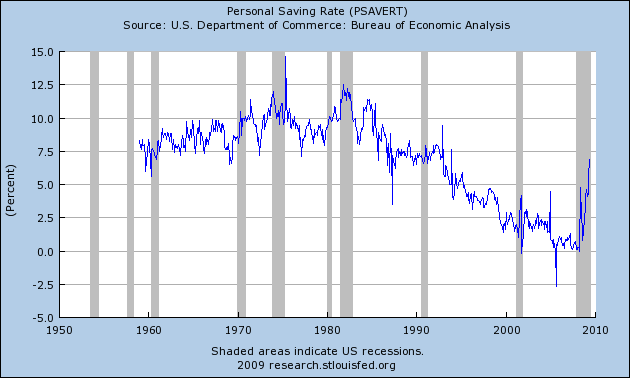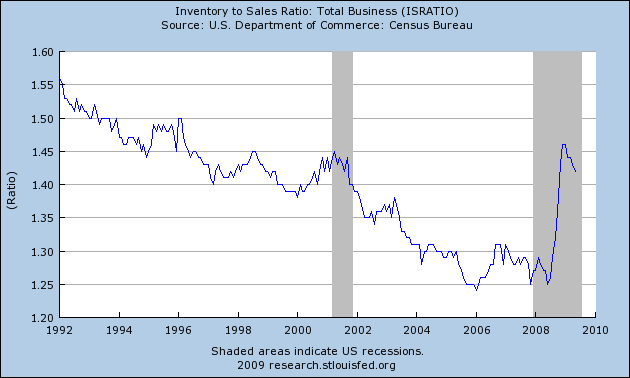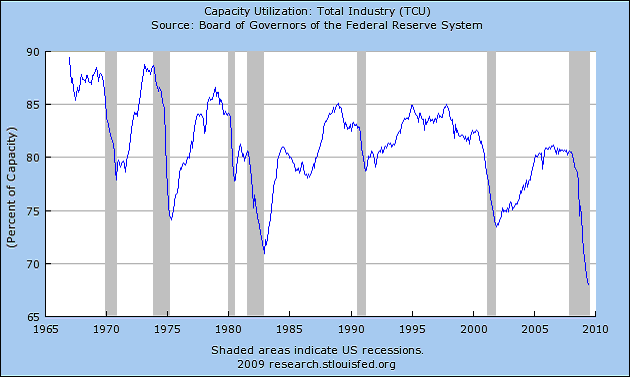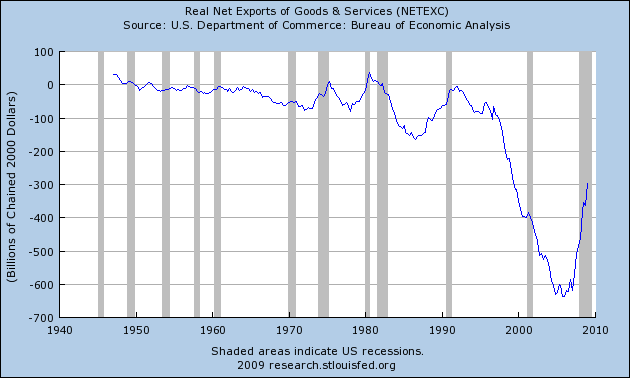
Exports Driving Economic
Growth
Aligning your portfolio with the next industries to
lead the economy and beat the market is basic to a sector rotation strategy.
The current recession is causing some significant changes to the underlying
economy that will affect investors. Surprisingly, companies that benefit
from their export business are seeing their opportunities expand. There are
some fundamental reasons for this change that will help them sustain their
export growth. Exports will be the leading reasons for the growth the U.S.
Gross Domestic Product (GDP) for several years to come. Look to align your
portfolio with the sectors that benefit from exports.
The wealth of economic data that is available can overwhelm
investors trying to identify the important facets of the current economy.
Fortunately, the St. Louis Federal Reserve Bank through
its Economic Data Fred® database
provides a wealth of data in easy to read charts that are useful to explain
important economic issues.
One of the biggest changes we are seeing in the
U.S.
economy is the massive deleveraging that is contributing to declining consumer
spending. After living beyond their means by using the asset appreciation of
their homes to fund a life style that was unsustainable, the average consumer in
the U.S. has cut
back. Those within 15 years of retirement are panicked they will not have enough
saved to live comfortable after they turn 65, as they have seen their retirement
accounts cut in half. Those in the 25 to 50 age brackets are realizing that they
are responsible for their financial future. They have seen what happened to
their parent’s investments, as well as their own and it scares them. As a
result, almost everyone is saving more as shown in the chart below. When
consumers save more, they spend less. Less spending, means fewer goods and
services being bought, lowering the growth of the economy. Longer term, this is
good, as the higher savings rates will create more capital for investment. It
could even help to offset some of the massive borrowing by the federal
government.

Not surprisingly, with lower spending many companies are
experience a rapid drop in sales. When sales fall, their supply chains need to
readjust to reflect the falling level of sales. This tends to cause inventories
to rise. The sales to inventory ratio is an excellent indictor of the level of
sales compared to goods available for sale.
The downtrend in inventory to sales since the early 1990’s
is a reflection of the vast improvements made in aligning the supply chain with
end sales. Instead of buying goods on the hope they will sell, now when a sale
takes place an order is transmitted immediately back through the supply chain to
initiate the production and distribution of another item. By lowering the amount
of inventory in the supply chain, the cost of goods falls, benefiting everyone
in the supply chain.
With the “new normal” as coined by Mohammed El Erian at
Pimco, the lower level of
spending per person will cause repercussions throughout the supply chain. The
U.S. will need fewer stores, distribution
centers, shipments, etc to supply the same number of people. Everyone in the
supply chain will have to adjust a lower level of sales per person.

Not surprisingly, capacity utilization is showing the
U.S.
is using less than 70% of its available productive capacity, the lowest level
since 1965 when this data series began. The U.S.
has a lot of spare capacity available. Since consumers are not likely to start
to return to their former spending levels, some of this capacity will not
return. The permanent closing of factories, distribution centers, and retail
stores is part of the underlying change in the economy to bring it back into
alignment with a new normal level of consumption. This transition is and will
continue to be painful. Longer term it will benefit everyone as the marginal
facilities are removed from the economy. The ones remaining will contribute to
higher level of productivity, making the goods and services produced in the
U.S. more competitive worldwide.

That last comment leads me to where the
U.S.
is already becoming more competitive and the place where investors can find the
best opportunities. As shown in the chart below of Real Net Exports of Goods and
Services, the U.S.
is experiencing a resurgence in exports, or at least exports are falling
proportionally less than imports. The improvement in the country’s trade deficit
is adding to the U.S. GDP growth helping to offset the fall in spending by
consumers and business. Another indication of the strength of exports relative
to imports is container imports for the port
of Los Angeles, the nation’s busiest
port, were down 18.4 percent in June 2009 compared to the same period in 2008
while exports showed a decrease of only 7.06 percent.
The change in this important component of the economy is
likely to be sustainable. The massive spending by the
U.S.
consumer that took place over the last ten to twenty years is helping to spawn
middle classes in countries such as China,
India,
Brazil,
Korea, and
Mexico
that benefited from the U.S.
demand for low cost imported goods. Now these people, who have money to spend,
will buy goods and services from throughout the world, including the U.S.
Helping to fuel this transition to an export economy is the fall in the value of
the U.S. dollar relative to many currencies. A lower U.S. dollar makes
U.S.
goods and services less expensive for people and companies in emerging countries
to buy. For those countries that peg their currency to the dollar, they will
come under pressure to adjust their currencies to reflect their new higher level
of purchasing capacity.
The cost advantage held by the emerging countries will
diminish as their economies adjust to their newfound wealth. This will help to
make the U.S.
more competitive in the world markets, contributing to the country’s expansion
of exports. The growing demand for U.S.
goods and services will push the GDP of the country up, offsetting the negative
affect of slower spending by consumers and businesses.

As a result, investors looking for ways to participate in
the growth of U.S. exports, should look to sectors and companies that provides
products and services currently and will be in demand by the emerging countries.
The technology and industrial sectors will be the largest benefactors, followed
by materials and some parts of the consumer discretionary. The rotation to more
exports offers investors an opportunity to participate in a growth engine of the
U.S.
economy.
Sector rotation is a proven strategy that offers investors an excellent way to
align their portfolios with the growth industries and companies in the economy.
Give the
Premium Membership a try. It
is free for the first four-weeks and you
have nothing to lose and a lot to gain. While we cannot guarantee you will make
money, we have beat the market every year since our inception.





